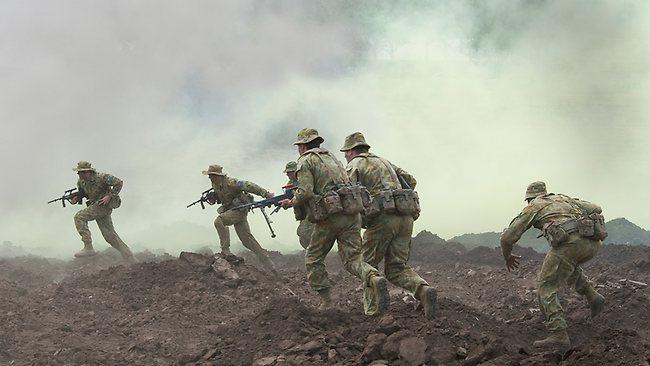Heart of the nation Holsworthy 2173
AT first glance this looks like a piece of classic war photography: a group of diggers advance across a shattered battlefield under heavy fire.

AT first glance this looks like a piece of classic war photography: a group of diggers are advancing across a shattered battlefield, under heavy fire from an unseen enemy.
But then you start to notice little details that don't stack up. The washed-out colours suggest a certain vintage, but it can't be Vietnam because the weapons are too modern. Afghanistan, then? No, the dirt's all wrong. And look at the trees on that high ridge in the background, half-veiled by the smoke: are they gums?
Actually, this photo was taken 30km southwest of Sydney's CBD, on a training ground at Holsworthy army base. These young men, fresh out of the 80-day recruit training course at Kapooka, near Wagga Wagga, have decided they want to be Combat Engineers, so they've come to the School of Military Engineering to be knocked into shape.
The three-month course starts with the very basics - "how to use a hammer", says Lieutenant Emily Dutton - and progresses through all of the skills they'll need as Combat Engineers, whose role, Dutton explains, is to "provide mobility and counter-mobility support" for the rest of the army. In layman's terms, this means building stuff (roads, bridges, airstrips and field defences) and blowing up other stuff that might be useful for the enemy. Combat Engineers - or "sappers", in army parlance - are also tasked with clearing mines and IEDs, which is a big part of the work in Afghanistan, where these blokes will probably be deployed.
They have to know how to fight too, of course. Which is what they're practising under simulated battle conditions in this photo, a finalist in the Sydney Life competition. The training ground is rigged with smoke grenades and explosive charges (some of which are buried, to create the ground-shaking effects of mortars), and blanks are being fired over their heads. The idea, says Dutton, is to create maximum chaos and confusion. "It's to give them an understanding of what will happen when they are actually in their first contact - so they're prepared."



